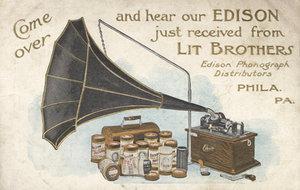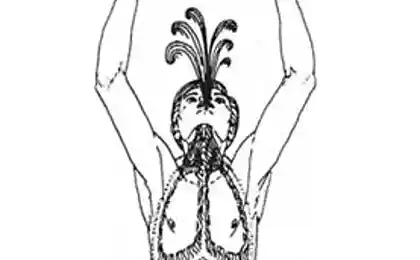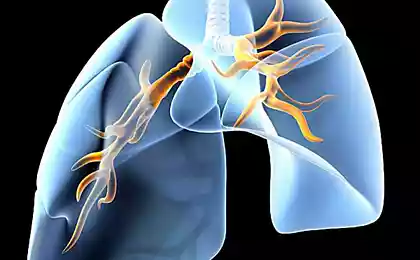935
Like the sound it reveals what can not be seen
50,818,933
For many years, scientists perceive the world in terms of what you can see. But in the last few decades, they increasingly began to "listen" to a variety of phenomena. Today we tell about the invention, whereby the medicine began to study the sounds in order to identify diseases.
Microscopes allow us to see the smallest particles, telescopes help develop a celestial space. And what about the sound? The researchers did not attach much importance to it until the invention that opened up new worlds - a stethoscope.
"I think," hearing culture "was first proved in Paris after the appearance of a stethoscope in the early 19th century," - said Trevor Pinch , a sociologist at Cornell University.
"Then it was impossible to see what happens in the human body - says Pinch - of course, if he was not dead, and that it was not interested in anyone except the pathologist." At the same time, the stethoscope could tell an amazing story - of how blood circulates, or as air enters the lungs.

The first stethoscopes from the book "Clinical research principles and practices in medicine" in 1874 later appeared binaural stethoscopes to hear the sounds at the same time allowing the two ears i>
"It was one of the first methods of diagnosis to the patient, regardless of its version of what is happening - says Pinch. - This device has played such an important role in medicine, now the doctor is often depicted with a stethoscope around his neck: for it is easy to determine who is a doctor, and who - no ».
We asked one of the doctors help us to hear the same thing he usually hears. Dr. Adam Lowe , endocrinologist and physician from Ithaca, NY, taught medical students how to use a stethoscope to detect heart disease as an example of one of his patients. We, in turn, prepared the recording equipment to record all the sounds. Student doctor named Nick Lowe Meston, he is in his third year at the Weill Cornell Medical College.
Lowe had a patient in the examination room and asked his students: "Nick, could you check the state of the cardiovascular system of our patient?" We have connected your device to an electronic stethoscope, with Lowe and Meston warned us not everyone is able to explain the sounds that come out of our body.
"The student is not easy to learn it - says Meston. - It will have to listen to the hearts of thousands of patients. " Meston put small funnel at the end of the device to the patient's neck - the carotid artery on the right - and that's what we heard .
This is the sound of the heart, pumps blood through the aortic valve. Passing through it, to the pulsating blood enters the carotid artery. Then Meston put an end to the stethoscope to the patient's side just below the armpit. We heard a slightly different sound.
Lowe turned to his students: "Do you hear the difference in timbre?" Meston promptly replied, "Yes, the second time the tone was much louder».
The patient has been detected a heart murmur - malfunctions of the heart valves that regulate blood flow. If you believe the textbooks on medicine, on the recording, you can hear a little whistle. If you do not hear, do not worry: our team of journalists also not heard anything like that.
But, obviously, it could hear Meston. "So you want me to tell you that just heard? - He asked us. - It was more like the motion of the mitral valve, although I expected to hear the noise of the aortic valve. And to understand this situation, I need help Dr. Lowe ».
Nick Lowe confirmed speculation. According to him, the patient's heart murmurs something like the sounds made and mitral and aortic valves.
Ordinary people do not hear this, simply because they do not know they have to hear. To better understand this, try to imagine the remains or bones that are found in the mud. An experienced archaeologist will be able to get them faster, because in his mind there is a clear image of what he needed to find.
"In fact, sounds that publishes the heart, have a complex structure, - says Lowe. - They are overtones, and many other sounds. That is why the sounds and noises that occur in the heart, have a special voice - he explains. - They have to listen carefully ».
How should listen? "The key element is the recognition of patterns," - later he told us Pinch.
Some patterns, such as the beginning of "Symphony №5» LV Beethoven's pretty simple.
Simple in the sense that they are easy to recognize. But the difficulty is increased when the sounds become more difficult. The next two entries кустарниковых wren began to sing alone. But then their songs quickly came together and formed a certain pattern .
Pinch All work is devoted to studying how scientists are listening. He argues that the rumor has a number of advantages over the eye. "The field of view in a sense, is right in front of us, like the screen - he said, while the sound" surrounds us on all sides ».
If the vision can be compared with the art gallery, the ear is more like a swimming pool, which we constantly swim. At night, we can wake up from a baby's cry or the sound of danger - for example, published a predator. These sounds start сигнальную system , which is located deep within our brains. According to Pinch, listening, especially at night, "likely to play a very important person in the process of evolution».
The problem of studying the physical phenomena by means of sound - from the weather and the behavior of animals and ending with the ability to determine when to change the oil in the engine - is that the sound will disappear very quickly: he said, flies in one ear, and departs from another.

Advertising Edison phonograph, approx. 1900 i>
However, as noted by the pinch, it was not until as long as people do not learn how to record sound. "I think in the early use of the phonograph, especially towards 1880, our attitude to the sound changed much - says Pinch - because for the first time in history we have the opportunity to" endure "sound. Now we can store it on different devices ».
Once a person has learned to record sounds and listen carefully to him, according to Pinch opened whole new universe opportunities.
Editor's Note: A careful reader has told us that a heart murmur may occur and other a > reasons, and most of these sounds is not a threat to human health.
A couple of interesting material for further reading:
Source:
For many years, scientists perceive the world in terms of what you can see. But in the last few decades, they increasingly began to "listen" to a variety of phenomena. Today we tell about the invention, whereby the medicine began to study the sounds in order to identify diseases.
Microscopes allow us to see the smallest particles, telescopes help develop a celestial space. And what about the sound? The researchers did not attach much importance to it until the invention that opened up new worlds - a stethoscope.
"I think," hearing culture "was first proved in Paris after the appearance of a stethoscope in the early 19th century," - said Trevor Pinch , a sociologist at Cornell University.
"Then it was impossible to see what happens in the human body - says Pinch - of course, if he was not dead, and that it was not interested in anyone except the pathologist." At the same time, the stethoscope could tell an amazing story - of how blood circulates, or as air enters the lungs.

The first stethoscopes from the book "Clinical research principles and practices in medicine" in 1874 later appeared binaural stethoscopes to hear the sounds at the same time allowing the two ears i>
"It was one of the first methods of diagnosis to the patient, regardless of its version of what is happening - says Pinch. - This device has played such an important role in medicine, now the doctor is often depicted with a stethoscope around his neck: for it is easy to determine who is a doctor, and who - no ».
We asked one of the doctors help us to hear the same thing he usually hears. Dr. Adam Lowe , endocrinologist and physician from Ithaca, NY, taught medical students how to use a stethoscope to detect heart disease as an example of one of his patients. We, in turn, prepared the recording equipment to record all the sounds. Student doctor named Nick Lowe Meston, he is in his third year at the Weill Cornell Medical College.
Lowe had a patient in the examination room and asked his students: "Nick, could you check the state of the cardiovascular system of our patient?" We have connected your device to an electronic stethoscope, with Lowe and Meston warned us not everyone is able to explain the sounds that come out of our body.
"The student is not easy to learn it - says Meston. - It will have to listen to the hearts of thousands of patients. " Meston put small funnel at the end of the device to the patient's neck - the carotid artery on the right - and that's what we heard .
This is the sound of the heart, pumps blood through the aortic valve. Passing through it, to the pulsating blood enters the carotid artery. Then Meston put an end to the stethoscope to the patient's side just below the armpit. We heard a slightly different sound.
Lowe turned to his students: "Do you hear the difference in timbre?" Meston promptly replied, "Yes, the second time the tone was much louder».
The patient has been detected a heart murmur - malfunctions of the heart valves that regulate blood flow. If you believe the textbooks on medicine, on the recording, you can hear a little whistle. If you do not hear, do not worry: our team of journalists also not heard anything like that.
But, obviously, it could hear Meston. "So you want me to tell you that just heard? - He asked us. - It was more like the motion of the mitral valve, although I expected to hear the noise of the aortic valve. And to understand this situation, I need help Dr. Lowe ».
Nick Lowe confirmed speculation. According to him, the patient's heart murmurs something like the sounds made and mitral and aortic valves.
Ordinary people do not hear this, simply because they do not know they have to hear. To better understand this, try to imagine the remains or bones that are found in the mud. An experienced archaeologist will be able to get them faster, because in his mind there is a clear image of what he needed to find.
"In fact, sounds that publishes the heart, have a complex structure, - says Lowe. - They are overtones, and many other sounds. That is why the sounds and noises that occur in the heart, have a special voice - he explains. - They have to listen carefully ».
How should listen? "The key element is the recognition of patterns," - later he told us Pinch.
Some patterns, such as the beginning of "Symphony №5» LV Beethoven's pretty simple.
Simple in the sense that they are easy to recognize. But the difficulty is increased when the sounds become more difficult. The next two entries кустарниковых wren began to sing alone. But then their songs quickly came together and formed a certain pattern .
Pinch All work is devoted to studying how scientists are listening. He argues that the rumor has a number of advantages over the eye. "The field of view in a sense, is right in front of us, like the screen - he said, while the sound" surrounds us on all sides ».
If the vision can be compared with the art gallery, the ear is more like a swimming pool, which we constantly swim. At night, we can wake up from a baby's cry or the sound of danger - for example, published a predator. These sounds start сигнальную system , which is located deep within our brains. According to Pinch, listening, especially at night, "likely to play a very important person in the process of evolution».
The problem of studying the physical phenomena by means of sound - from the weather and the behavior of animals and ending with the ability to determine when to change the oil in the engine - is that the sound will disappear very quickly: he said, flies in one ear, and departs from another.

Advertising Edison phonograph, approx. 1900 i>
However, as noted by the pinch, it was not until as long as people do not learn how to record sound. "I think in the early use of the phonograph, especially towards 1880, our attitude to the sound changed much - says Pinch - because for the first time in history we have the opportunity to" endure "sound. Now we can store it on different devices ».
Once a person has learned to record sounds and listen carefully to him, according to Pinch opened whole new universe opportunities.
Editor's Note: A careful reader has told us that a heart murmur may occur and other a > reasons, and most of these sounds is not a threat to human health.
A couple of interesting material for further reading:
Source:
Mars was hardly warm and humid - the results of NASA research
5 facts about planet Earth. Quick Reference























